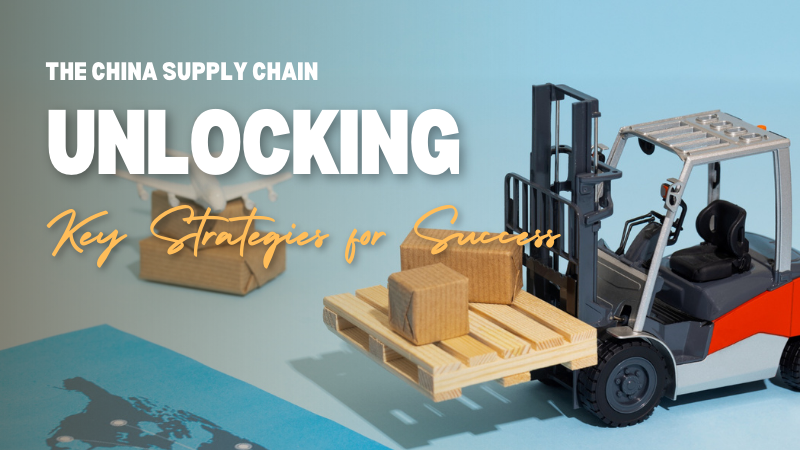Unlocking the China Supply Chain: Key Strategies for Success

China remains the world’s top manufacturing hub, offering businesses access to a vast network of suppliers, cost-effective production, and cutting-edge technology. However, navigating the complexities of the China supply chain requires strategic planning, local expertise, and strong supplier relationships. Whether you're a sourcing agent, retailer, or e-commerce entrepreneur, mastering China’s supply chain can give your business a competitive edge.
1. Understand China's Manufacturing Landscape
China's manufacturing industry is highly diverse, with different regions specializing in various products:
Guangdong Province – Electronics, LED lighting, home appliances
Zhejiang & Jiangsu Provinces – Textiles, apparel, and automotive parts
Fujian Province – Footwear and clothing
Shandong Province – Machinery and chemicals
Sichuan & Chongqing – Heavy equipment and automotive manufacturing
Knowing where to source specific products ensures you’re dealing with the most competitive suppliers.
2. Choose the Right Supplier
Finding a reliable supplier is crucial for long-term success. Here’s what to look for:
Factory vs. Trading Company – Factories typically offer lower costs, while trading companies provide flexibility and a wider range of products.
Certifications – Check for ISO, CE, FDA, or other industry-specific certifications.
MOQ (Minimum Order Quantity) – Ensure the supplier’s MOQ aligns with your budget and business model.
Reputation & Reviews – Use platforms like Alibaba, Made-in-China, or work with sourcing agents to verify supplier credibility.
3. Optimize Communication & Negotiation
Many Chinese suppliers have English-speaking sales teams, but clear communication is essential. Tips for smooth interactions:
Use clear and direct language in emails and messages.
Discuss payment terms, lead times, and quality control upfront.
Build relationships through WeChat or video calls to establish trust.
Negotiate bulk pricing but do not sacrifice quality for cost savings.
4. Implement Quality Control & Inspections
Quality issues can lead to delays and lost revenue. To prevent problems:
Request product samples before placing a large order.
Conduct factory audits or hire third-party inspection companies like SGS or TÜV Rheinland.
Set clear quality standards and tolerances in contracts.
5. Streamline Logistics & Shipping
China offers multiple shipping options:
Sea Freight – Cost-effective for bulk orders but slower (25–40 days).
Air Freight – Faster but expensive, ideal for small, high-value items.
Rail Freight – A balance between speed and cost, mainly for EU shipments.
Courier (DHL, FedEx, UPS) – Best for samples and small orders.
Work with freight forwarders to optimize costs and avoid customs delays.
6. Stay Compliant with Regulations
Ensure your products meet the import regulations of your destination country:
Customs Duties & Tariffs – Research applicable taxes and HS codes.
Compliance Standards – Follow safety regulations like CE (Europe), FCC (USA), or FDA (for health-related items).
Intellectual Property Protection – Register trademarks and patents to safeguard your brand.
Final Thoughts
Unlocking China’s supply chain requires a combination of market knowledge, supplier due diligence, and logistics efficiency. By building strong supplier relationships, ensuring product quality, and managing shipping effectively, businesses can maximize their sourcing success.
Looking for a trusted sourcing partner to simplify your China supply chain? Contact Guangzhou Bright Future Sourcing at info@gz-brightfuture.com or add us on WeChat: BFsourcing to discuss your sourcing needs.